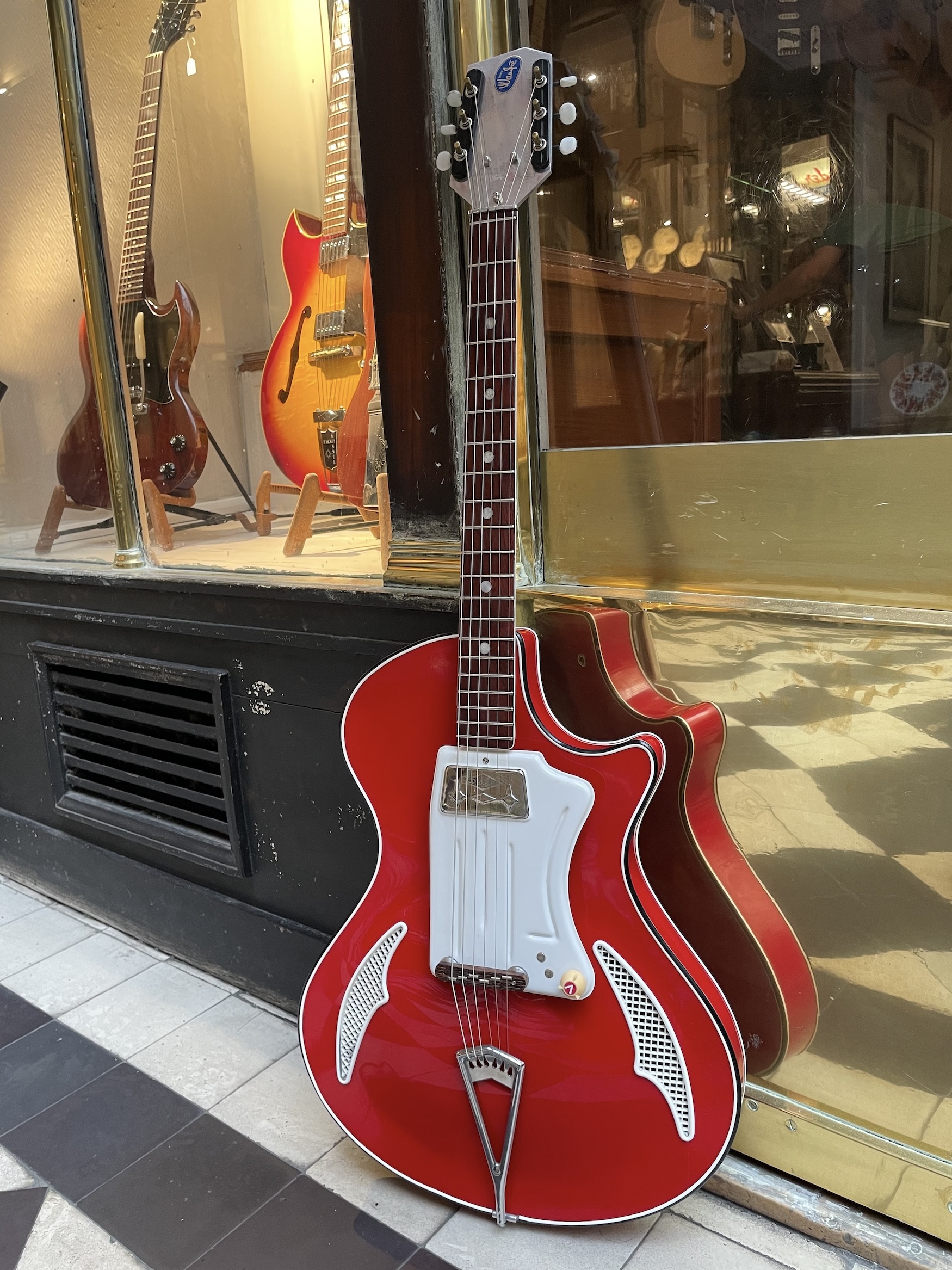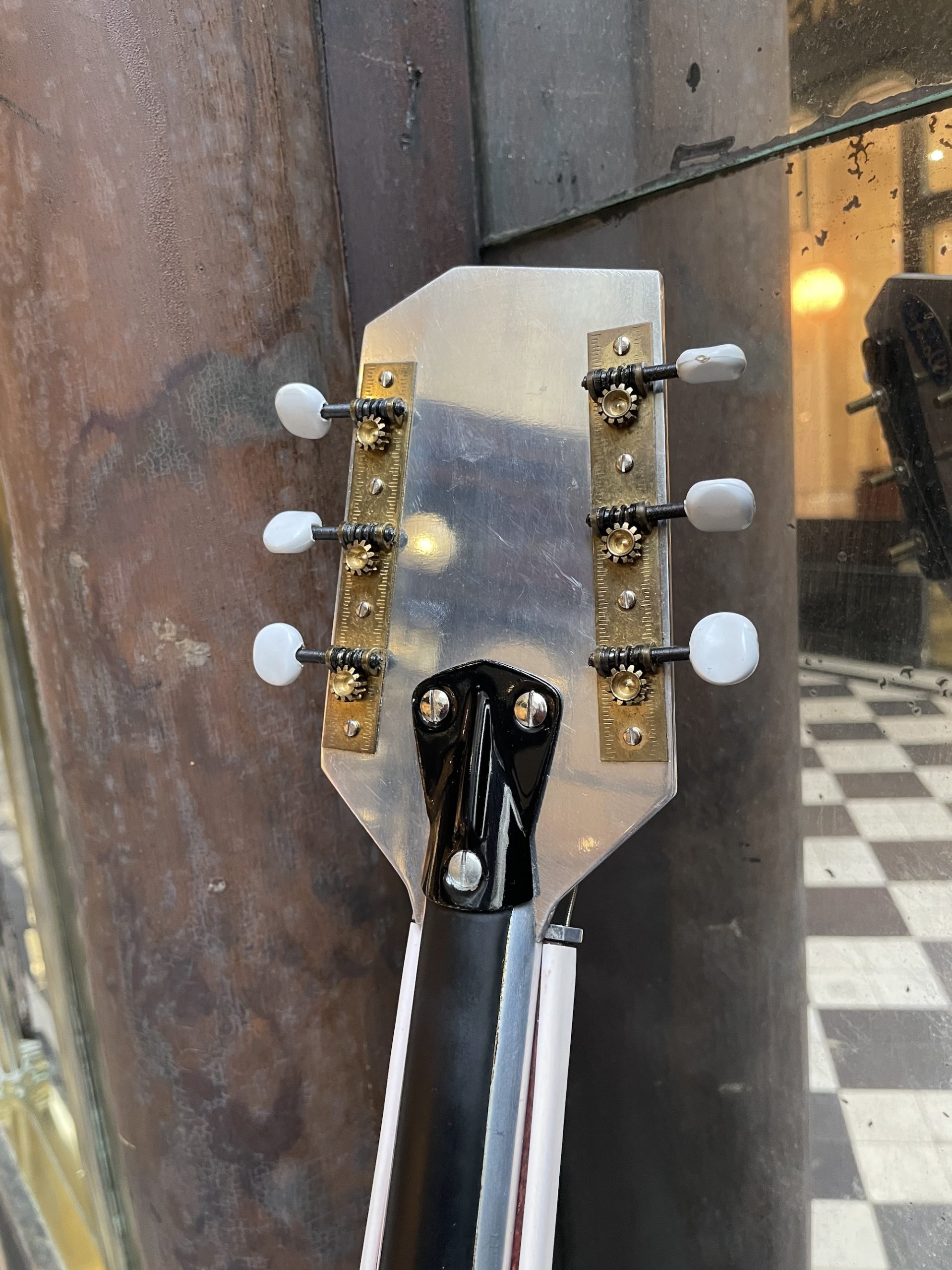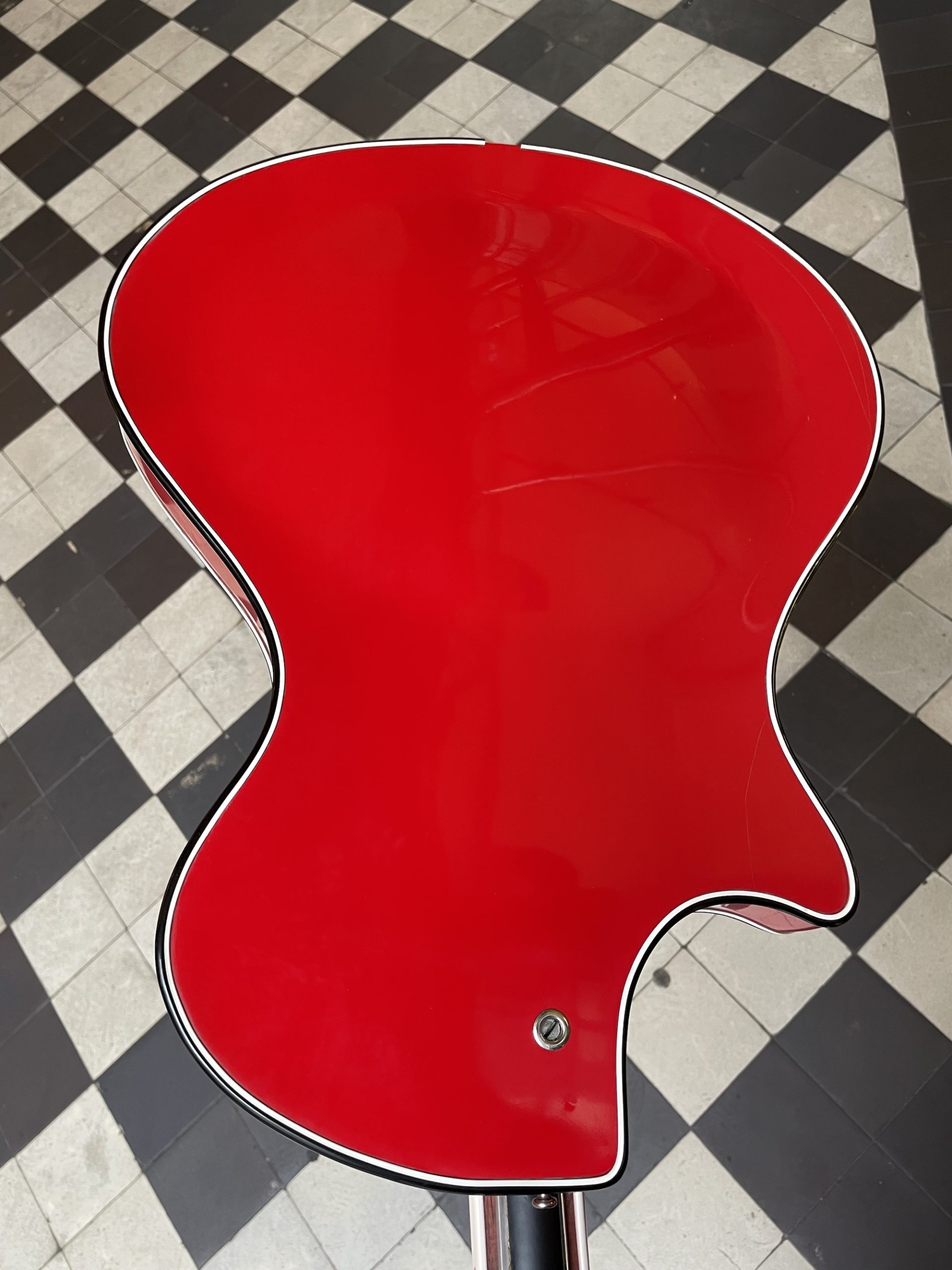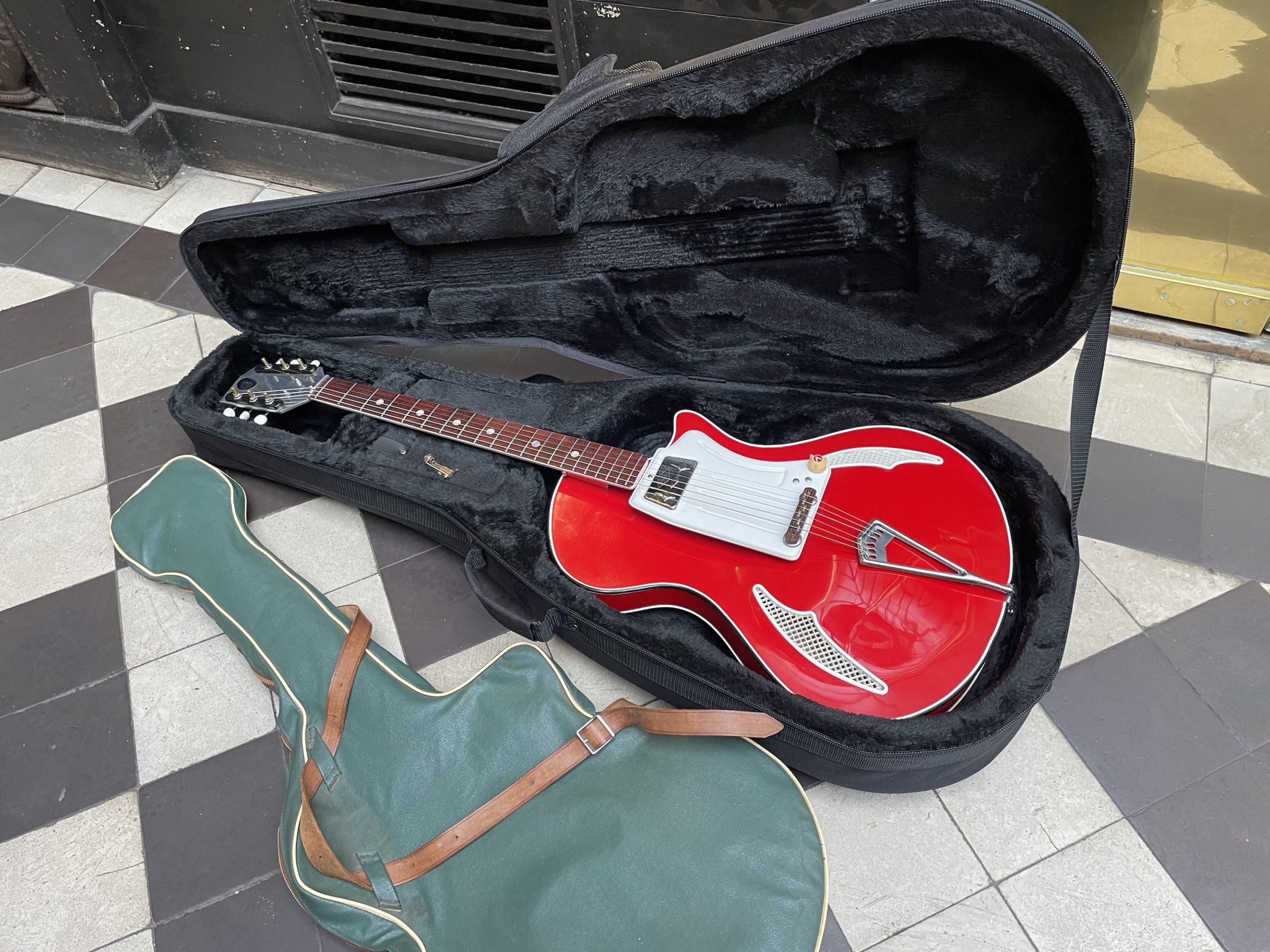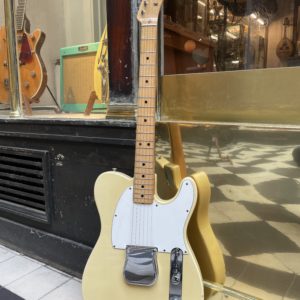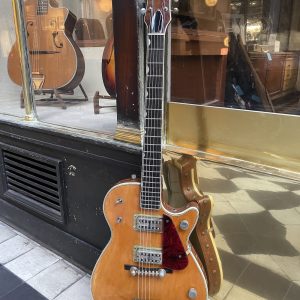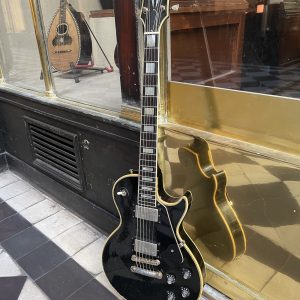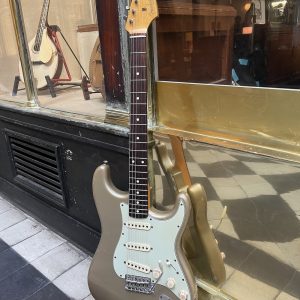c.1960 WANDRÈ BLUE JEANS TEENAGER (TRI-LAM)
€3.300,00
The prices indicated correspond to the price in the case of payment in-store or by bank transfer. In the case of payment by credit card via the website, a processing fee of [3.25% + €0.25]* will be applied to the total amount of the basket, including delivery costs.
Wandrè Blue Jeans Teenager (Tri-Lam, according to the nomenclature specific to collectors) manufactured circa 1960.
This unusual guitar is the creation of the eccentric musical instrument designer Antonio Pioli, better known by his artist name Wandrè – his story is a meandrous tale on the navigation of the post-war artistic world in Italy, the conciliation between commercial spirit and creative spirit… Pioli’s life cannot in fact be summed up with his production of exotic guitars, as such we recommend reading the book written by Marco Ballestri which chronicles down to the deepest twists and turns of the existence of this esoteric character.
The Blue Jeans model presented here was initiated in 1959, with a generation of young rebellious guitarists in mind, eager to shake up the conventional forms of the guitar – and indeed we are faced with what was at the time of its creation a real anomaly in the world of the six-string: an ultra-light laminated wood body finished in a bright red color, unconventionally shaped soundholes covered with molded plastic mesh, an aluminum neck at the end of which is screwed the head bearing the designer’s name, neck itself screwed onto the body by means of a tilting system allowing the neck angle to be adjusted (Wandrè had to have studied his Mozzani!), a single pickup made by Davoli integrated into the molded plastic pickguard… The instrument is both simple in its construction and the immediacy of its use, and iconic in the way in which it was made. Note here that the term Tri-Lam, often used to designate this model, does not correspond to the nomenclature of Wandrè instruments as found in period catalogs and brochures – it seems to stem from the material used for the body, a three-layer wood laminate, which in usage and by synecdoche found itself designating the model as a whole.
The passage of time is generally not kind to Wandrè guitars and it is common to find them in a more or less advanced states of disrepair. Luckily, the example presented here reached us in superb original condition, although requiring considerable work to restore all its playability and comfort: planning of the frets, adjustment of the bridge, adjustment of the neck angle, restoration of the body and neck binding, conversion of the notoriously difficult original jack connector to a modern mini-jack connector (the original part is stored in the case for any purist having in their possession the appropriate cable and can be reassembled on request).
Sold in perfect playing condition, with its original soft case and a modern hard case.
Video : https://youtu.be/aRlj7HXC3Vk
Related products
-
1959 GRETSCH 6130 ROUNDUP
€18.000,00Original price was: €18.000,00.€15.100,00Current price is: €15.100,00. -
1969 GIBSON LES PAUL CUSTOM – EX – RICHIE FAULKNER (JUDAS PRIEST)
€29.800,00Original price was: €29.800,00.€25.800,00Current price is: €25.800,00. -
2010 FENDER CS STRATOCASTER MASTERBUILT JASON SMITH
€6.800,00Original price was: €6.800,00.€6.200,00Current price is: €6.200,00.


